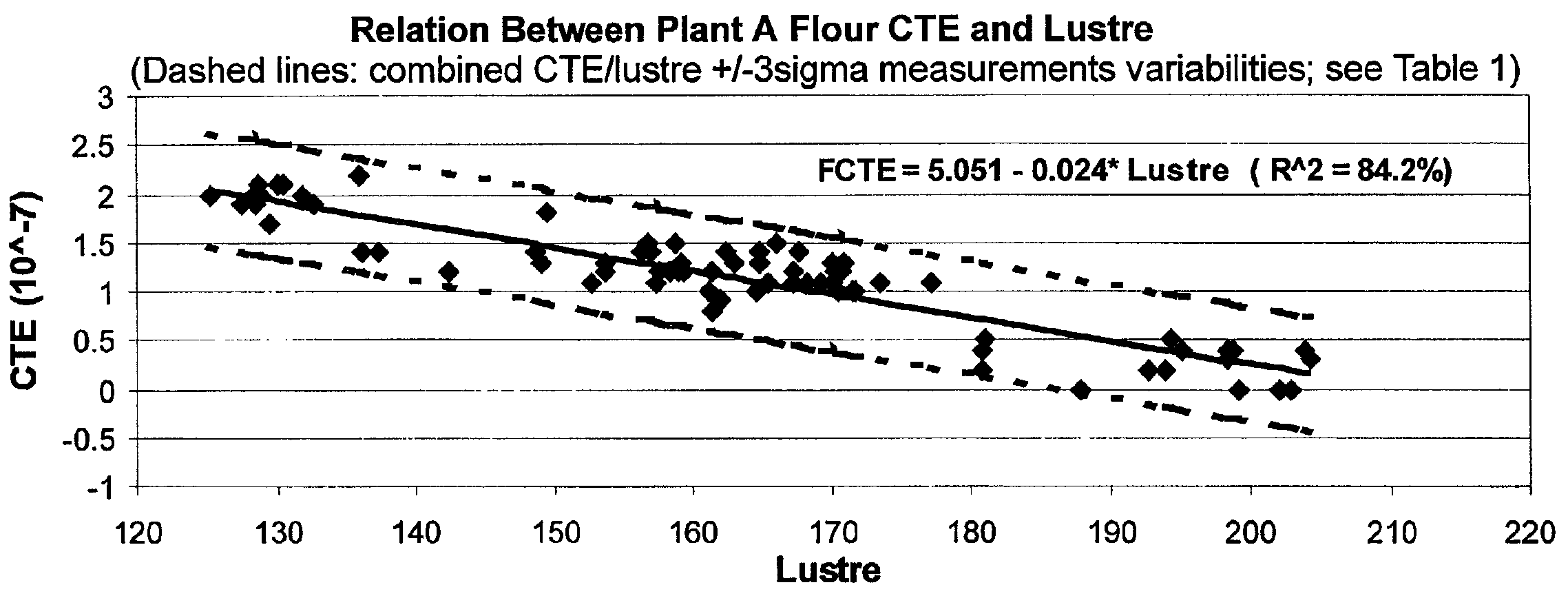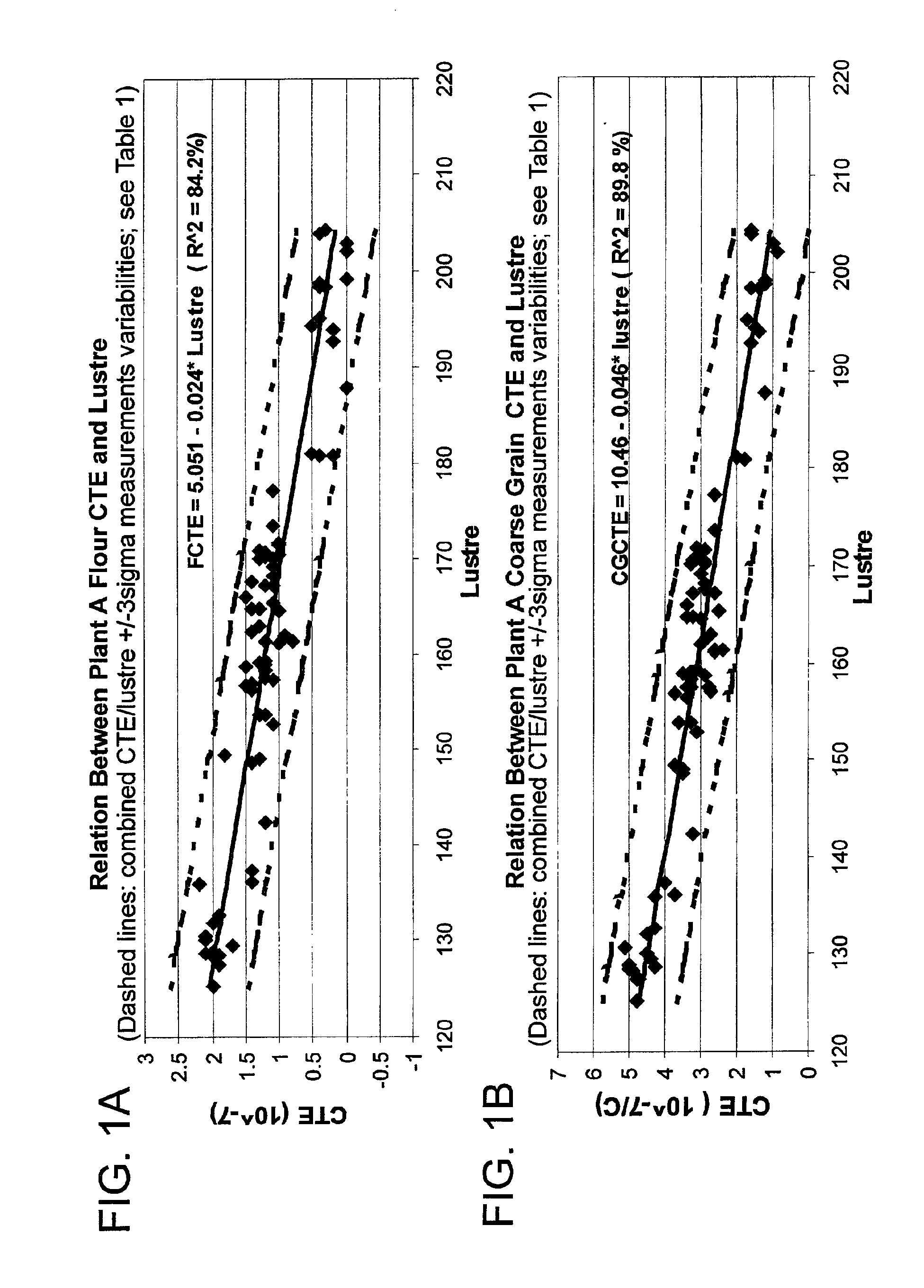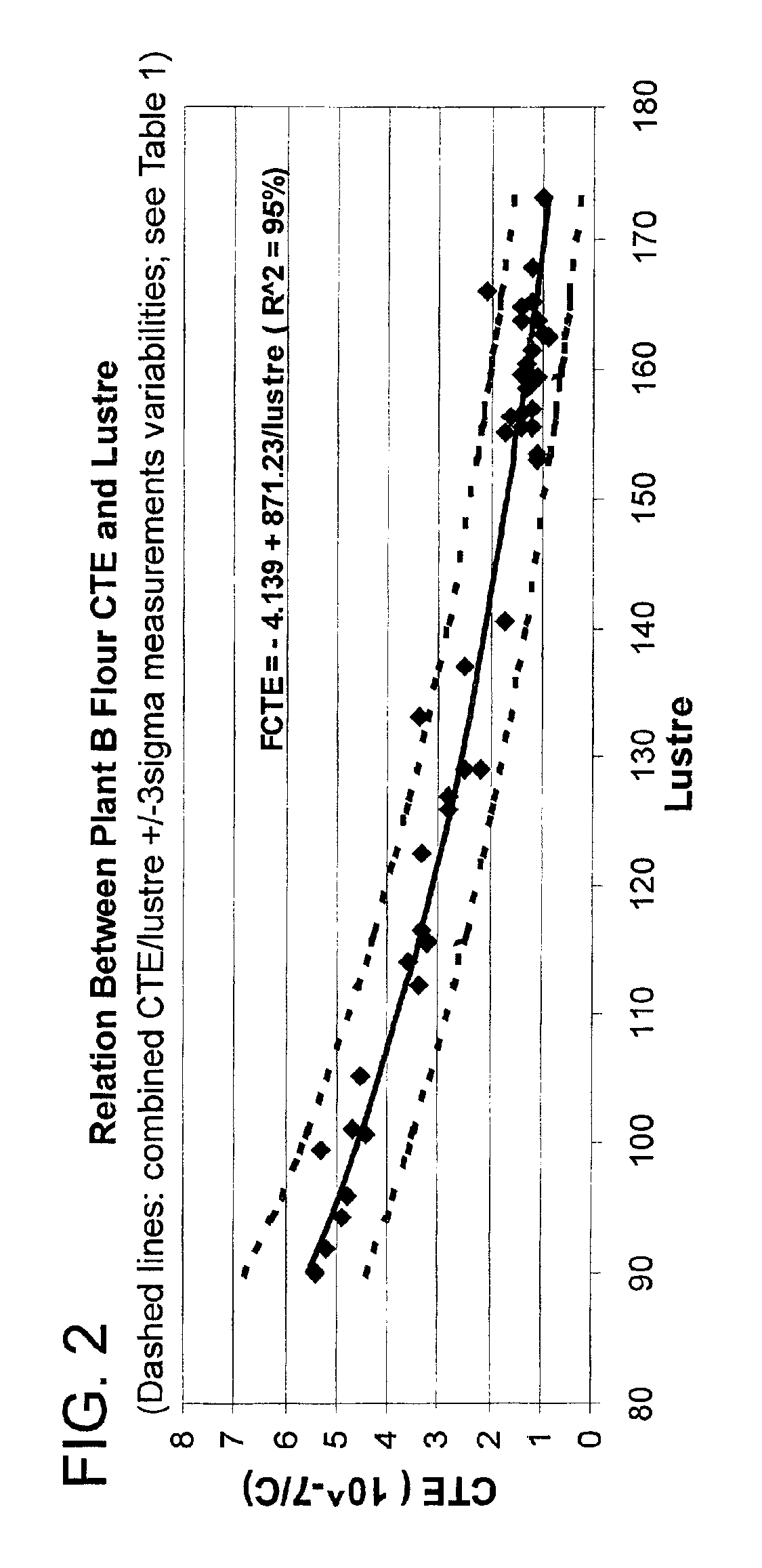Use of a scanner to determine the optical density of calcined coke as a measure of coke quality
a technology of optical density and calcined coke, which is applied in the field of improving the method of analyzing the quality of petroleum byproducts in particle form, can solve the problems of difficult classification of coke products based on lustre measurements, complex and time-consuming known methods for measuring coke cte, and fairly involved procedures. , to achieve the effect of accurately classifying coke products, increasing the efficiency of petroleum processing, and quick classification
- Summary
- Abstract
- Description
- Claims
- Application Information
AI Technical Summary
Benefits of technology
Problems solved by technology
Method used
Image
Examples
example 1
[0053]Lustre testing as described hereinabove was performed in accordance with an exemplary embodiment of the invention (FIGS. 1-4 and Table 1). The lustre test results are the average of five separate measurements on the same coke sample. As described hereinafter, for the lustre test measurements, about 400-500 grams of de-oiled and crushed (28 / 100 ty— Tyler standard screen scale fractions are used).
[0054]The simple regressions (maximum R2 criteria) shown in FIGS. 1 and 2 indicate excellent relations between plant generated CTEs and lustre given the combined lustre / CTE measurement variabilities. The dashed lines in FIGS. 1 and 2 were obtained by translation of the mean regression lines in the horizontal and vertical directions by the ±3σ values (see Table 1) of the corresponding measurements.
[0055]Based on the above findings regarding the low variability of the lustre test as well as its excellent correlation with CTEs, it is believed that significant advantages will be achieved si...
PUM
 Login to View More
Login to View More Abstract
Description
Claims
Application Information
 Login to View More
Login to View More - R&D
- Intellectual Property
- Life Sciences
- Materials
- Tech Scout
- Unparalleled Data Quality
- Higher Quality Content
- 60% Fewer Hallucinations
Browse by: Latest US Patents, China's latest patents, Technical Efficacy Thesaurus, Application Domain, Technology Topic, Popular Technical Reports.
© 2025 PatSnap. All rights reserved.Legal|Privacy policy|Modern Slavery Act Transparency Statement|Sitemap|About US| Contact US: help@patsnap.com



